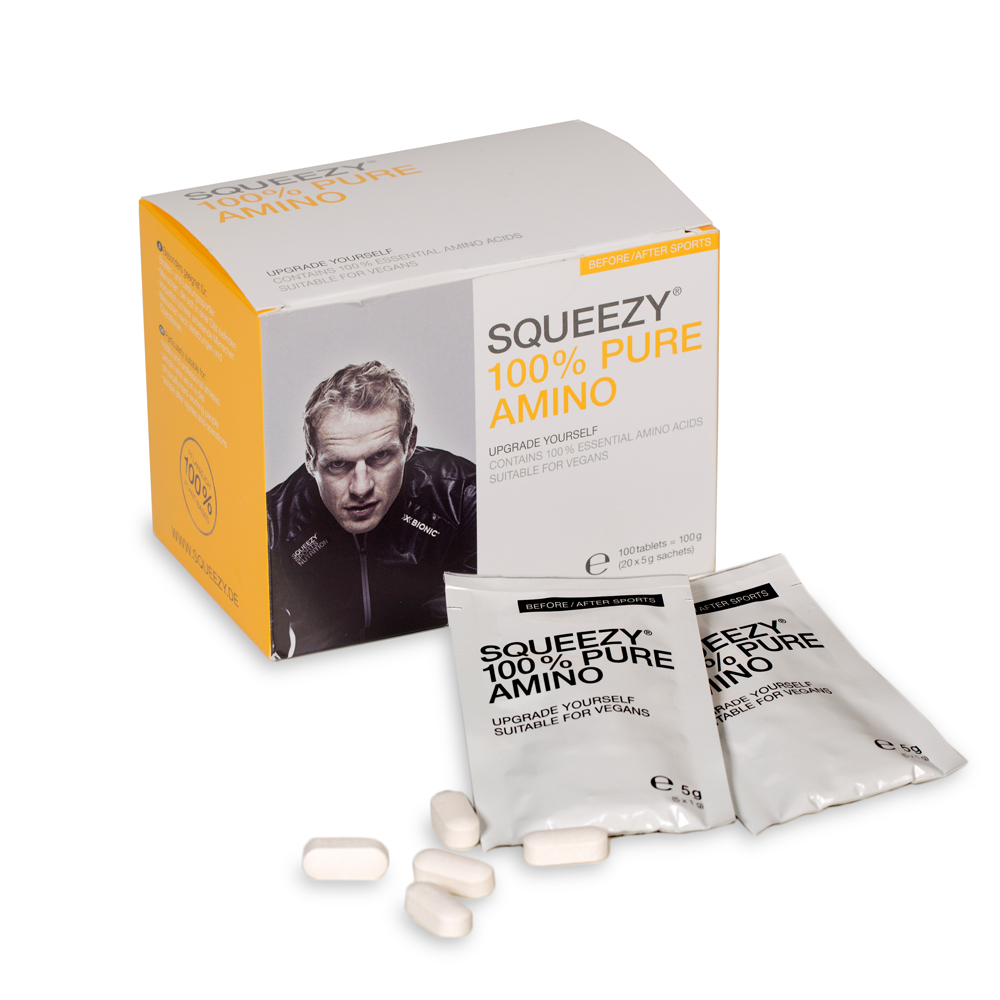Besidescarbohydrates and fats, proteins are the third food component that can provide energy to the body. However, protein is also of enormous importance for other processes of the body...

Admittedly, the topic of protein and amino acids is a bit dry and sounds complicated. Fortunately, it can be broken down to a very simple intake recommendation. All you need is your body weight and our little table at the end of this article.
Proteins are primarily used as building material for muscles, bones or tendons, for example, if the energy supply is secure. A kilogram of muscle, for example, consists of around 20 % protein, 70 % water and 10 % fat. Enzymes, like many hormones, also consist largely of protein. Of particular interest to endurance athletes are the antibodies, which are important for immune defense and also consist of proteins. If the energy supply is insufficient during long or intense exercise, antibodies are partially used for energy metabolism. This leads to a deteriorated immune defense and thus to an increased susceptibility to infections ( see statement on the "open window effect").
You can see very well from this long list how important proteins are for the body, especially during continuous and demanding loads, as they occur during training and competition.
Amino acids
Proteins are made up of chains of amino acids. All amino acids have an identical basic structure, consisting of an amino and an acid residue - hence the name.
However, amino acids differ in their remaining molecular part, which is structured differently depending on the amino acid. Known here, for example, are the branched chain amino acids (BCAA), whose remaining molecular part is branched (L-leucine, L-isoleucine and L-valine) and which are preferentially absorbed by the muscles.
For human nutrition, it is important to know that only about half of the approximately 20 proteinogenic amino acids can be produced by the body itself. The other amino acids must be supplied to the body with food. They are therefore also referred to as essential amino acids.
These essential amino acids include: Histidine*
- Isoleucine
- Leucine
- Lysine
- Methionine
- Phenylalanine
- Threonine
- Tryptophan
- Valine
*Histidine is essential for the infant, but not for adults later.
So how does this help us as athletes and how much protein should we consume and at what levels of exertion?
Determine the individual protein requirement
The need for protein depends on the type of sport and the load:
| Load | Quantity |
| With casual endurance training and a normal diet | 0.8 - 1.0 grams per kilogram of body weight per day |
| For moderate intensity training | 1.0 - 1.5 grams per kilogram body weight u. day |
| For high intensity training | 1.5 - 1.7 grams per kilogram body weight u. Day |
The increased protein requirement is primarily a consequence of regenerative processes, e.g. the repair of muscles, ligaments and tendons.
In order to cover the widest possible spectrum of the amino acids contained in protein, it is advisable to use a variety of protein sources when consuming protein.
Important note: A long-term intake of more than 2g of protein per kilogram of body weight per day puts a great strain on our excretory organs, especially the kidneys!
How do I meet my protein needs as an athlete?
From our point of view there is a quite simple solution to ensure an optimal supply for us athletes.
On the one hand, a natural, varied basic diet with as little denatured food as possible (so often swing the wooden spoon) and for times of high stress, whether in training or during the competition phase, the additional supply of essential amino acids.
These do not have to be extensively metabolized first, as is the case with protein, and therefore also enter the bloodstream much more quickly. In addition, even very small amounts are sufficient. It has been proven in several studies with athletes that already 5g of the essential amino acids cover the daily requirement.
In my opinion, the research work of Prof. Dr. M. Luca-Moretti, who researched and patented an optimal composition of the various amino acids with the MAP (Master Amino Acid Pattern), takes an outstanding position here. After the patent expired a few years ago, there are now also numerous, cheaper products available that are based on this work and also allow vegetarians and vegans an optimal and simple supply.
With our Squeezy 100% Pure Amino we offer a simple and efficient form of substitution of all 8 essential amino acids.
Conclusion:
You are welcome to download this article from the series "Das muss mal gesagt werden" as a download as PDF.
![]() Much more information also on www.abnehmen-als-sportler.de
Much more information also on www.abnehmen-als-sportler.de
![]() You can find more statements of this series on this overview page ...
You can find more statements of this series on this overview page ...
